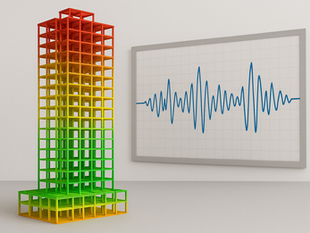
The Social Impact of Architecture: How Thoughtful Design Shapes Communities
0
8
0
Architecture is often seen primarily as a visual or functional pursuit, creating spaces that look good or serve a purpose. However, the social impact of architecture goes far beyond aesthetics and utility. It is about shaping communities, influencing social well-being, and addressing some of society’s most pressing challenges. Whether through the design of communal spaces, ensuring accessibility for all, or tackling housing shortages, architecture can be a powerful tool for social change.
At ALD Architecture, we believe that architectural design has the potential to create spaces that not only meet functional needs but also have a lasting, positive impact on the people who use them. Through our focus on ALD Architecture VERTICALITY, we’re exploring how vertical design, specifically tower buildings, can address key social issues like housing shortages, displacement, and the need for community-building in urban environments.

Architecture as a Social Catalyst
Good architecture has the ability to foster a sense of community, belonging, and safety. In the context of densely populated urban areas, where space is limited, thoughtful design can make all the difference. Towers and high-rise buildings, when designed with the community in mind, can provide more than just housing, they can create vibrant, connected neighbourhoods.
Communal Spaces: A Hub for Social Interaction
One of the key ways architecture can enhance social well-being is through the creation of communal spaces. High-rise residential buildings, when designed with communal areas like shared gardens, recreational spaces, and common rooms, encourage interaction among residents. These spaces can foster a sense of community and connection, helping people from diverse backgrounds come together, form relationships and build a stronger sense of belonging.
In the case of ALD Architecture VERTICALITY, we emphasize the importance of communal spaces within tower buildings. A well-designed tower can offer a variety of shared spaces that cater to the needs of its residents, from quiet areas for relaxation to spaces for social events or community activities. These areas become more than just physical locations; they become the heart of the community, contributing to a better quality of life for everyone involved.
Addressing Housing Shortages and Displacement
The global housing crisis is one of the most pressing social issues of our time. Cities around the world are struggling to provide affordable housing for their growing populations, leading to overcrowding, displacement and increased inequality. In this context, vertical design offers a promising solution.
Towers as Affordable Housing
High-rise buildings, when designed with careful attention to affordability and accessibility, can address the pressing need for more housing. By utilizing vertical space, architects can create more housing units on smaller plots of land, helping to ease the pressure on urban areas. ALD Architecture VERTICALITY explores the possibilities of designing vertical communities that can provide affordable housing while maintaining high standards of quality and liveability.
Vertical design can also promote mixed-use developments, where residential units are integrated with commercial spaces, educational facilities and public amenities. This integration creates self-sustaining neighbourhoods where people can live, work, and socialize within the same community, reducing the need for long commutes and fostering a deeper connection between people and their environment.
Combatting Displacement through Thoughtful Design
Urban gentrification has led to the displacement of many lower-income communities as housing prices rise. However, architects can play a role in reversing this trend by creating spaces that prioritize affordability and inclusivity. At ALD Architecture, we believe in designing spaces that address both the physical and social needs of communities, ensuring that they are not just beautiful, but also accessible and inclusive.
Vertical design, when combined with affordable housing policies, can help combat displacement. By focusing on mixed-income communities and providing affordable housing units within tower developments, architects can help create neighbourhoods that are inclusive of people from all walks of life, ensuring that everyone has a place in the city.
Creating a Sense of Safety and Belonging
Architecture has a direct influence on how safe and comfortable people feel in their environments. Thoughtful design can reduce crime, promote well-being and create a sense of security. This is particularly important in high-density areas where social issues like poverty, crime and inequality often intersect.
Designing for Safety and Accessibility
The design of public spaces, streets and buildings can affect how safe people feel. For example, the strategic placement of lighting, open sightlines and clear pathways in public areas can reduce crime and create an environment where people feel safe walking around. Furthermore, designing spaces that are accessible to people of all abilities ensures that no one is excluded, fostering a more inclusive and equitable society.
At ALD Architecture VERTICALITY, we aim to incorporate safety features into our tower designs, ensuring that residents feel secure in their homes and public spaces. By prioritizing accessibility, from wheelchair ramps to elevators and wider doorways, we ensure that everyone, regardless of their mobility, can fully engage with their environment.
Building Communities Through Verticality
Incorporating social impact into architectural design isn’t just about addressing issues like housing shortages or safety; it’s about building a community from the ground up. Verticality allows for a higher density of living, but with careful planning, it can also foster a sense of togetherness and connection.
At ALD Architecture, we are committed to pushing the boundaries of vertical design to create buildings that are not just towers, but communities. Through well-thought-out spaces that promote interaction, affordability and inclusivity, we aim to use architecture to create a positive social impact and shape the future of urban living.
Conclusion
Architecture is a powerful tool that shapes the communities we live in. Through thoughtful design, architects can address pressing social issues such as housing shortages, displacement and community fragmentation. ALD Architecture VERTICALITY is our approach to creating vertical communities that prioritize not only aesthetics and functionality but also the well-being of their residents. As we continue to explore the social impact of architecture, we remain committed to designing spaces that foster connection, inclusivity and a higher quality of life for everyone.






